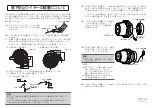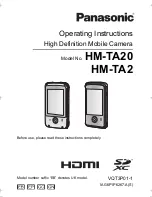
2 - 10
But, as shown in Figure 2-11, the Film Shade has moved to the left, into its blocking position. A lug on one
edge of the Film Shade has slid under the finger on the Power Actuator, pivoting the Actuator upward. The
molded tab or shoulder on the Actuator is now snug up against VER, in contact with B+.
Even if the camera were now folded, pivoting the Erect Sensor down away from VER, VER is held up in
contact with B+ by the tab on the Power Actuator. Thus power is maintained until the processing cycle is
completed. When the Film Shade retracts and its lug moves to the right (position shown in Figure 2-10), it
allows the spring-loaded Power Actuator to pivot downward again. VER drops away from B+ and closes to
GND.
Figure 2-11. Camera Folded; Film Shade Lug Pivots Power Actuator Upward
Keeping VER and B+ Closed
Summary of Contents for Joshua Captiva
Page 6: ...This page intentionally blank...
Page 7: ...1 1 1 Description...
Page 15: ...1 9 Figure 1 6 Joshua System Features...
Page 23: ...1 17 Figure 1 16 Principal Parts of the Joshua Drive System...
Page 31: ...1 25 Figure 1 22 Joshua Components Covers and Panels...
Page 32: ...This page intentionally blank...
Page 33: ...2 1 2 Theory of Operation...
Page 36: ...2 4 Figure 2 1 Pictorial ChartShowing JoshuaCamera Sequence of Operation...
Page 57: ...2 25 Figure2 31 Circuit Diagram...
Page 58: ...This page intentionally blank...
Page 59: ...3 1 3 Testing and Adjustments...
Page 72: ...This page intentionally blank...
Page 73: ...4 1 4 Disassembly and Reassembly...
Page 108: ...This page intentionally blank...
Page 109: ...5 1 5 Troubleshooting...
Page 122: ...5 14 5 14...
Page 123: ...5 15 Figure 5 7 Joshua Camera Timing Diagram...
Page 124: ...This page intentionally blank...
Page 125: ...A 1 Appendix...
Page 134: ...This page intentionally blank...















































